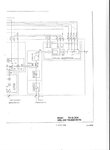Palpurul
Member level 3
Is it possible to use a RF signal generator as tracking generator along with a sprectrum analyzer? I've been reading many datasheets and discovered that the tracking generators that are integrated to the spectrum analyzers don't very good amplitude accuracy. To get more accurate measurements I thought maybe RF gen can be used. I know you can normalize and calibrate this out, but when measuring amplifiers +-3dB in the input power could still be a problem if the DUT has low dynamic range. Is it possible? If it's possible what do I need in a spectrum analyzer and RF gen?
